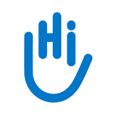Latest news
By country
By activity
- Rights (121)
- Emergency (647)
- Rehabilitation (464)
- Prevention (97)
- Inclusion (271)
- Health (190)
- Explosive weapons (337)
- Event (16)
- Covid-19 (5)
By publication date
In Uganda, people with disabilities are largely overlooked by humanitarian aid 07/16/25
Thousands of refugees with disabilities have been excluded from food aid. This silent crisis is worsening every day.
- Uganda
In the DRC, Vanessa, a physical therapist, helps children facing malnutrition 07/08/25
Vanessa, 26, is a physical therapist specializing in stimulation therapy for children experiencing malnutrition. She works at HI with displaced people in North Kivu, DRC.
- Democratic Republic of Congo
Myanmar Earthquake: HI's response continues 3 months later 06/30/25
On March 28, a 7.7-magnitude earthquake hit the center Myanmar. HI mobilized immediately. Three months later, our teams are still working with affected communities.
- Myanmar
Vital rehabilitation support from HI in rural Ukraine 06/18/25
Thanks to HI's vital rehabilitation support, Volodymyr, a 72-year-old stroke survivor from the remote village of Huty, in the East of Ukraine, has regained his mobility and independence.
- Ukraine
Djadah & Haleema, refugees in Chad: finding solidarity after violence 06/17/25
Djadah and Haleema fled the violence in their country. Their sadly similar journeys testify to the terrible violence suffered by the people of Sudan.
- Chad
A new start for malnourished children in the Democratic Republic of Congo 06/10/25
Eastern DRC is experiencing a major crisis, exacerbated since January 2025. As a result, many malnourished children need support to make up for lost time in their development.
- Democratic Republic of Congo
"In Gaza, the reality exceeds anything I've experienced in humanitarian emergencies" 06/08/25
Specialist in emergency rehabilitation Violette Van Bever was in Gaza last April and May to support HI's rehabilitation teams. She describes a humanitarian hell:
- Occupied Palestinian Territories
In Simon's shoes: the dreams and struggles of a young volunteer 06/05/25
In the Kakuma refugee camp, Simon, an energetic and intrepid teenager with albinism, is actively involved in raising awareness among his peers and bringing life to his school.
- Kenya
Clubfoot support in Burkina Faso 06/03/25
Each year in Burkina Faso, around 958 children are born with clubfoot — a condition that can be easily treated if addressed early. HI works to raise parents’ awareness and provide them with support.
- Burkina Faso
Delivering aid through partnership: a humanitarian logistics story from Lebanon 06/01/25
Thanks to the ReliefEU Capacities, HI/Atlas Logistics is supporting humanitarian actors in Lebanon to deliver essential goods to the most vulnerable populations.
- Lebanon
Voices from Ukraine’s Silent Crisis: Ukrainians Left Behind as U.S. Funding Stalls 05/29/25
Three years after the escalation of the war between Russia and Ukraine, the whole country is still under bombardment, and the number of civilian victims continues to rise. Listen to the silent voices of Ukrainians as they share their stories.
- Ukraine
Poni Anet: mother, refugee and business owner 05/16/25
Poni Anet Wori’s entrepreneurial spirit knows no bounds. She opened a shop in Kalobeyei and, after receiving training and economic support, her business is now flourishing.
- Kenya
Promoting a more inclusive working environment in Kakuma 05/16/25
In Kakuma refugee camp, refugees and Kenyans run a number of micro-enterprises. HI and its partners are helping them promote and develop their businesses.
- Kenya
Heba: A humanitarian worker in Palestine 05/16/25
Heba, 34 years old, is a prosthetics specialist working with HI at the Nahla Center in Khan Yunis City. She shares how she balances her humanitarian mission, her family, and the danger around her.
- Occupied Palestinian Territories
Getting back on his feet after an accident: Souleyman is walking thanks to his prosthesis 05/16/25
After his accident, Souleyman lost his leg and his job. With the support of HI and the State, he received treatment and a prosthesis. Now, he is planning a new future.
- Benin


















